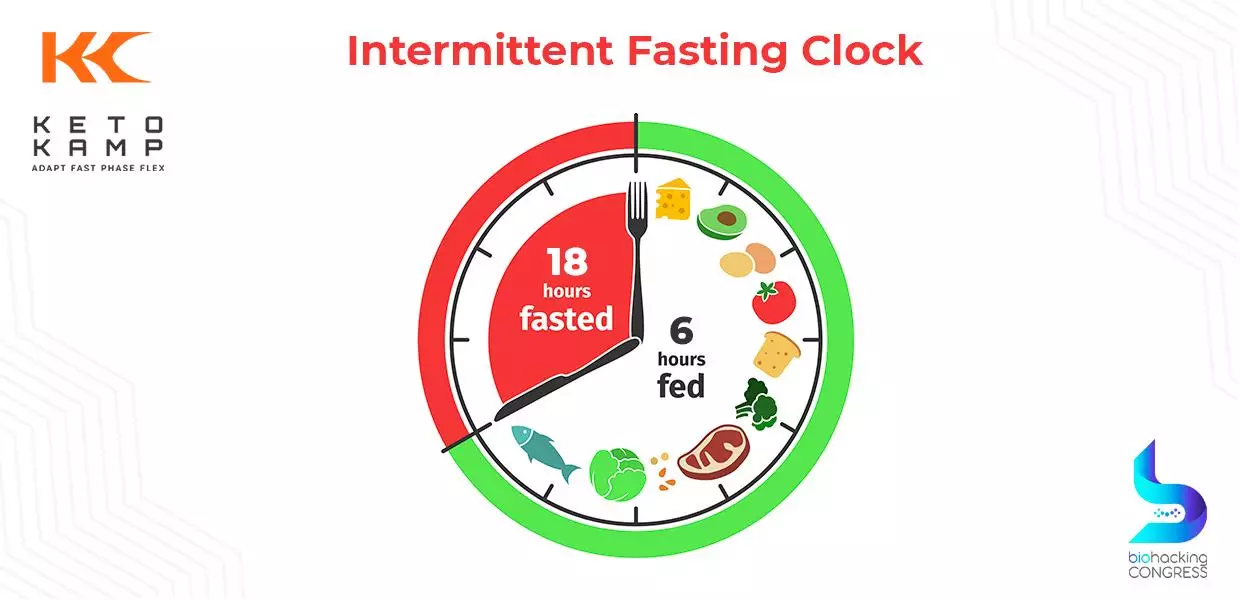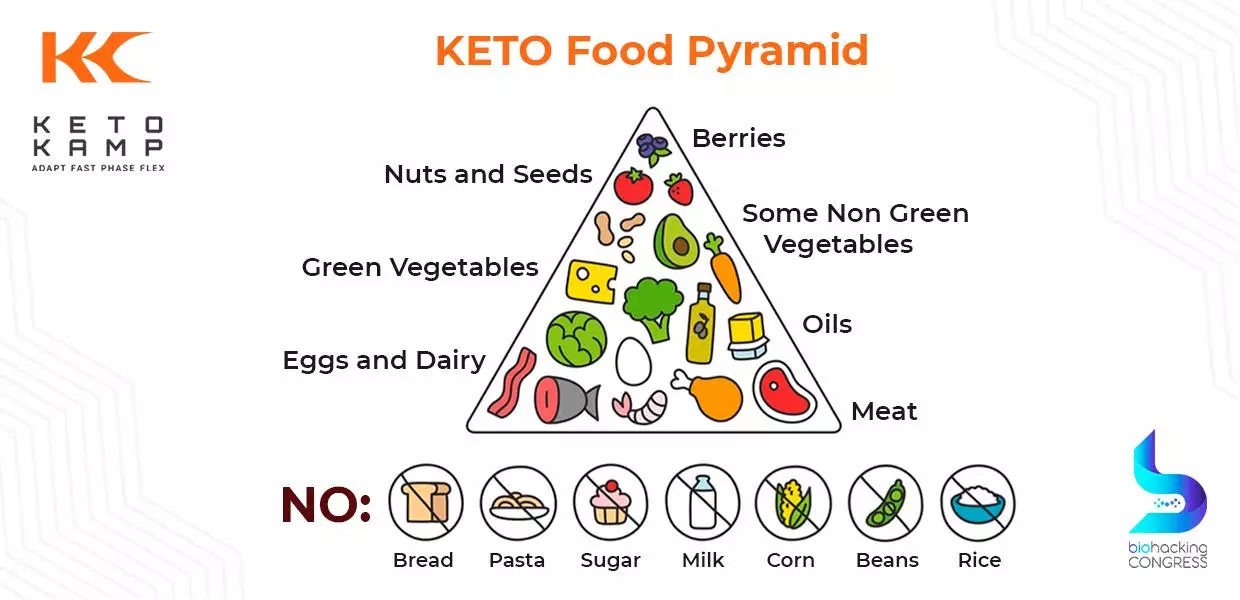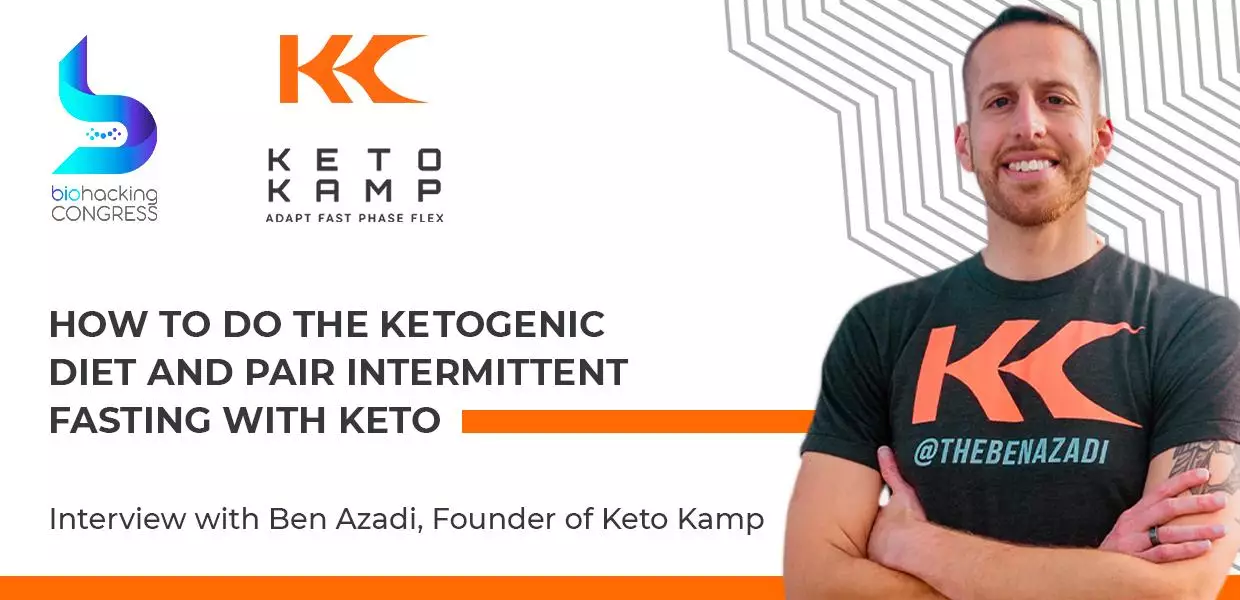How to do the Ketogenic Diet and pair Intermittent Fasting with Keto
Ketogenic diet or simply a keto diet is a sustainable, enjoyable, high fat, moderate protein, low carb lifestyle. That can help you to boost weight loss and performance, and to improve your health, and fitness results.⠀
The concept behind this diet is to get more calories from protein and fat and less from carbs.
It involves radically reducing carbohydrate intake and substituting it with fat. This carbs reduction puts your body into ketosis, which means the body producing ketone bodies in the body tissues out of fat and using them for energy instead of carbs.
Julia Smila, Co-Founder of BiohackingCongress, and Ben Azadi, bestselling author, Founder of Keto Kamp discussed the benefits of the Ketogenic Diet and how it affects our body as well as explained how to pair Intermittent Fasting with Keto at the Live Stream.
Back in 2008, Ben went through a personal health transformation of shredding 80 pounds of pure fat. Ever since his mission is to help 1 billion people live a healthier lifestyle.
“Keto technically is not a diet, it's a metabolic process, ketosis has been around since humans have been around. We know that every single one of our ancestors did keto, their environment forced them into ketosis and then they flexed out of it which is my principal called keto flexing. What is essentially when your carbohydrates go low in the body, the body could only choose 2 sources of fuel. We have 70 trillion cells in the body but only 2 options for fuel. We're either burning sugar, glucose or bringing back ketones. The problem with being stuck as a sugar burner is: it's a very toxic fuel source, it creates a lot of sailors by-products.” Ben Azadi explained.
The reduction of carbs or calories in your nutrition leads to the state when your liver produces ketones from fat. These ketones are a fuel source throughout the body, especially for the brain. The brain consumes 20% of the body’s daily needed energy, despite only representing 2% of the body’s mass. The brain can’t run on fat straight. It can run either on glucose or ketones.
We are taught at schools that the best way to boost brain functions is to take some glucose. However, we need to emphasize that ketones fuel our brain even better than glucose. In comparison to glucose, ketones are a source of more effective and more transparent energy as they produce less toxic metabolism by-products. Their effectiveness happens because ketones increase the mitochondrial, wherein cells get extra energy hit for their buck.
When you transition to burning fat, your liver starts to produce ketones. There are 3 types of ketones fibers that could be found in the body:
- acetoacetate - expelled in the breath;
- beta-hydroxybutyrate - in the blood;
- acetone - in the urine.
“The brain is mostly 70% fat and it loves to live off of ketones like babies, for example, that are breastfed go interactive services because it helps the development of the brain. It's a very natural process and if you do it the right way, the way I want to teach at BiohackingCongress, it's a great way to reduce inflammation and allow your body to heal.” Ben added.
Many studies show that the ketogenic diet, as well as low-carb diets, can help improve several important risk factors for heart disease like body fat, cholesterol levels, blood pressure, as well as blood sugar.
The ketogenic diet is a high fat, moderate protein, very low carb lifestyle that can boost your weight loss performance as well as improve your health and exercise results. The last one is very important as it may occur that exercising does not give any results, it happens because you have the wrong diet. Nutrition is a crucial part and the ketogenic diet can give great results.
It's all about reducing inflammation and if we do keto in the right way, we have the right results. The body heals and then you get the weight loss, boosting energy levels, reducing inflammation, and the overall goal.
What is the period of adaptation? Everyone who starts their keto-diet journey has some period of adaptation when the body starts to get fuel not from glucose but from fat.
“If you’re starting keto, how do you get into ketosis? You just start to decrease your carbohydrates gradually, you want to take your carbohydrate eventually. Especially the processed carbs like grains, sugar, packaged meals. Here we reduce carbohydrates but at the same time increase protein in fat. You’ll feel satiated and it’ll teach your body to burn fat. With the carbs you eat, ideally, it should be green leafy vegetables and non-starchy carbs, you want to keep drop below 50 grams for the day. Of course, most people could get into ketosis with that amount, for some people they need to drop a little bit lower, but 50 is a good general marker for it,” Ben gave some advice.
Ben also shared a practical rule on how to start the keto - the 2-2-2-2 rule. The 2-2-2-2 rule is important to newcomers in the first 14 days. Every day consume 2 tablespoons of avocado oil or olive oil, 2 tablespoons of grass-fed butter or grass-fed ghee, 2 tablespoons of coconut oil or MCT oil, and then 2 teaspoons of sea salt. It should teach your body to burn fats instead of sugar.

How to pair Intermittent Fasting with Keto? We can play with different meals and have a longer time between meals. How to switch from keto to fasting and vice versa?
“I love fasting. It's a very powerful and useful tool that goes hand in hand with keto. They both help to keep insulin low and your body to burn fat,” Ben said.
Ben does recommend doing about 14 days of a well-formulated ketogenic approach and then pair fasting. If you want to start fast and haven't done it yet, you should try a 12 hour fast. You're done eating, then you go to bed, and at 7:00 am you break the fast. What you want to do is start pushing out your practice to like an 18-6 schedule eventually: 18 hours fasted and 6 hours eating window. Two keto-friendly meals in your 6-hour eating window, that's an excellent sustainable approach.
“The best way to break your fast is with a meal that has mostly protein and fat lower carbs, for example, eggs and avocado, wild-caught fish, green leafy vegetables, a fatty salad or protein shake,” Ben explained.
Feel free to watch the full IG Live on our Instagram account.
Ben Azadi was the Speaker of the last BiohackingCongress, Silicon Valley, where he gave a lecture on 5 Keto Biohacks You've Never Heard Before. Subscribe to watch his lecture as well as lectures, panel discussions, and performances from renowned biohackers with a BiohackingCongress year-long subscription.
Based on the lecture by Ben Azadi.
Special Access to
Exclusive TopBiohacks
and more


